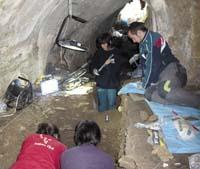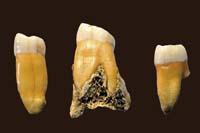Neanderthals, not so different from us
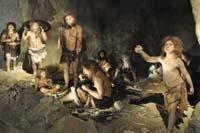
The journal Science published in May 2010 an analysis of the Neanderthal genome together with a series of additional articles. The sequencing, led by the genetic Svante Pääbo of the Max Planck Institute, had a great impact, especially due to the presence of Neanderthal genes in our genome.
In recent years, the question about hybridization has been revealed again and again: Were there crosses between them, taking into account that there have been evidence that both were inhabited in different areas of Europe?
According to the work presented in Science, the answer is affirmative. In fact, they sequenced 60% of the Neanderthal genome. He was then compared to the current five people. Thus, they saw that current human beings kept in their genomes some Neanderthal genes, with the exception of Africans.
The most convincing hypothesis to explain this is that the Neanderthals and ancestors of the current human being crossed after leaving Africa and before extending through Eurasia. The crossing has been estimated to be between 100,000 and 50,000 years in Next Asia. Archaeological remains coincide with genetic calculations. However, researchers believe that hybridization was quite limited.
However, it was not the only conclusion of that study. Not even the only important study recently carried out on Neanderthals. In fact, along with genetics, archaeologists, paleontologists, anthropologists and researchers from other fields are also working and providing useful data to better know these human beings.
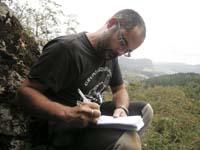
For example, they have recently published an article in the journal PNAS that discards the idea that Neanderthals were purely carnivorous. The authors, anthropologists and archaeologists of Washington have based their research on the dental remains of the Neanderthals of the caves of Iraq and Belgium.
Specifically, they have investigated traces of vegetable origin and have shown that they were part of their diet. Some of these plants and seeds are still eaten today and, in addition, have found indications that they were burnt. For this reason, the researchers have stated that they were able to transform the edible plants of their environment to make them easier to digest. As our ancestors did.
Each of the studies that are carried out on the Neanderthals is a piece in their puzzle and, in general, as the puzzle is forming, each time the researchers see the Neanderthal closer. That is, most researchers consider that they are not as different from us as they thought before. What's more, some believe that our ancestors and Neanderthals would be even more similar to those of us and them.
Change of paradigm shift
This is the case of the doctor of archaeology Joseba Ríos. Neandertal specializes in man, is now a professor at the University of Cantabria and, before that, until 2009, worked as a researcher at the Max Planck Institute for a couple of years. Therefore, he knows first-hand the study of the Neanderthal genome.
Ríos is also a researcher of the Upper Paleolithic, since he considers it very important to know what happened after the disappearance of Neanderthals to correctly interpret information about Neanderthals. He says that "from the beginning we have always compared Neanderthals with us; the conclusions of this comparison are the basis of our vision of Neanderthals. Therefore, there are many prejudices derived from evolutionism. Before they thought that this species had disappeared and another, ours, has advanced. That means that we are better. From this point of view, it is understood that Neanderthals were primitive and undeveloped beings."
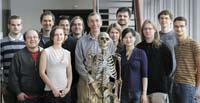
This conviction has made the discoveries that are being made today so surprising to many. Rios addresses the example of the use of fire: "When it was learned that the Neanderthals dominated the fire, it was the news of Christ. Why? Because they had no capacity to do so because there was prejudice. But, in fact, it is not so eye-catching or special, since the first traces that show that humans used fire are 600,000 years ago."
On the other hand, Ríos warns that it is not correct to speak of the Neandertal as if all formed a homogeneous group. With the passage of time, and due to the geographical distribution they had, variants emerged that did not have the same lifestyle, industry, organization. According to Ríos, "culturally they would also be different from each other." Therefore, by saying that they dominated the fire, it would be necessary to specify which; "otherwise, it is like saying that modern man knows how to make and use computers, and it is true that some know it, but many others do not, and of course 50 years ago no one knew it".
Leaving this clear, the question now is, according to Ríos: "The Neanderthals were human beings, but as human as we are? ". And he continues: "We now know that in Europe there were two types of human beings in a period of 10,000 years. They probably wouldn't have much contact, but I'm sure they had contact. To what extent were they similar? The underlying question is: What is humanity? We have a model, ours, we are ourselves. So now we have the opportunity to compare ourselves with another and to know more about us from that comparison."
Like other scientists, Ríos wonders whether a Neanderthal and our ancestor will find the other as the same species. It is an unanswered question.
Genetic contribution and others
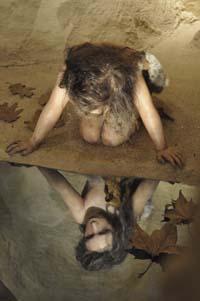
Much has been discussed if the Neanderthal is a subspecies of H. sapiens or a differentiated species of the genus Homo, but there is still no absolute consensus. According to Ríos, this is where you look: As for the characterization of the species, in paleontology and paleoanthropology, the morphology of the bones has been contemplated and, in this sense, there is no doubt that they are different species. But from a genetic point of view it is not so clear. But genetics has never been used to differentiate species."
However, in recent years genetics have made important contributions and some results have had an extraordinary impact, although sometimes they have not been decisive. For example, the demonstration that the FOXP2 gene presented our same variant provoked a debate on the ability to speak Neanderthal.
The linguist of UPV-EHU, Itziar Laka, explained that this gene is directly related to language, with the ability to plan movements and compute sequences. Therefore, this finding suggests that in some things it might be our own, but most researchers recognize that having a certain gene is not enough to prove anything.
However, Ríos has no doubt about the language: "The Neanderthals had a complex cultural transmission, for example, in the techniques of carved stone. And it lasted more than 200.000 years and there were adaptations, a historical development... For this it is essential to have a language. Perhaps they would speak differently, but among us there is also a great linguistic diversity, and all are languages. For they too would have theirs."
Search for answers, create questions
Precisely, the cultural aspect is the one that most attracts Ríos: "We have seen that among the Neanderthals there were several cultures and that they were not simple adaptations to the environment. For example, according to a study conducted in the Basque Country, in the past goats were the most abundant resource, although those Neanderthals hunted deer. That group was culturally a lover of deer."
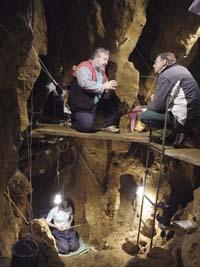
Ríos highlights the influence of culture. In his opinion, "it is enough for a group to have a norm and, for example, do not allow girls to have children up to a certain age, to have a different evolution than that suggested by biological or genetic studies." Therefore, to obtain direct conclusions it is necessary to take into account all aspects, since they are complementary.
For example, when performing a genetic analysis of the tracks of El Sidrón in Asturias, they realize that the kinship was much greater than that of the females. Hence it follows that they chose females outside the group to be children. It is the first time that a genetic research provides clues about behavior. "Yes, we cannot generalize it and think that other Neanderthal groups from other places or times acted the same."
And although they find some answers, new mysteries appear to researchers. The last, the man Denisova. When fossils of a human being were found in the Siberian cave of Denisova, they did not have enough data to decide whether they were from the Neanderthal or from us. Now, the Max Planck Institute has made a genetic analysis, according to which it has similarities with Neanderthals and it seems that it also crossed with modern man. But they are neither one nor the other. That is, they belong to a new species. "It will bring a long rope," says Ríos, unable to hide curiosity.
